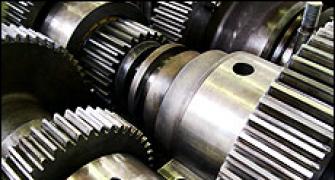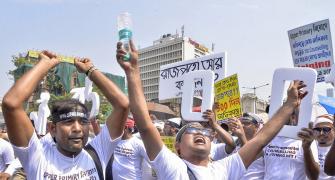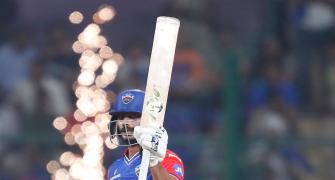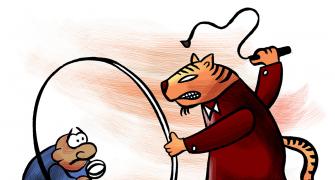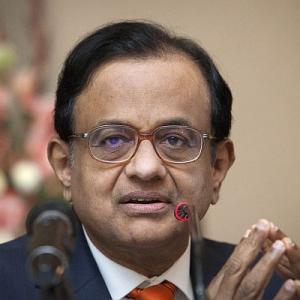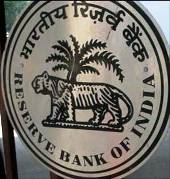 The Reserve Bank of India has hinted at reversing its tight monetary stance after almost two years of continuous anti-inflation measures.
The Reserve Bank of India has hinted at reversing its tight monetary stance after almost two years of continuous anti-inflation measures.
The question is which tool it should use to shift gear.
While the finance ministry wants RBI to cut the repo rate, at which it lends money to banks against government securities for the short term, some economists believe the central bank should wait for some time before doing so.
On the other hand, HSBC, whose Purchasing Managers' Index is giving a robust picture of Indian manufacturing and services growth, wants RBI to still consider inflation a major concern, rather than economic expansion.
The central bank will review its monetary policy on January 24.
It chose to keep things unchanged in the last policy review, on December 16, after increasing rates 13 times since March 2010.
Earlier this week, RBI governor D Subbarao had indicated it could reverse the tight monetary stance adopted since March 2010.
Among policy rates, it is only the repo that RBI alters nowadays.
The reverse repo rate, at which it absorbs liquidity against government securities from banks, is adjusted automatically.
The finance ministry's view is in sync with that of business chambers.
The latter have been demanding rate cuts by the RBI, as economic growth has been coming down and the outlook, as indicated in official data so far, does not look promising.
India's economic growth plunged to a nine-quarter low of 6.9 per cent in the second quarter of this financial year.
With 7.7 per cent growth in the first quarter, this meant economic expansion of 7.3 per cent in the first half.
With industrial output contracting by 5.1 per cent in October, higher growth seems unlikely in the second half.
However. . .
Many economists believe although liquidity is not a problem, RBI should cut banks' cash reserve ratio.
However, some finance ministry officials say cutting the statutory liquidity ratio and increasing the use of open market operations would be a better way to manage liquidity.
The sector has not been hit by a liquidity crunch, but bankers their margins are under pressure and slashing CRR would be right in this environment.
"RBI should go for a CRR cut. . . Banks' margins have got squeezed, but till the time RBI runs out of options, I do not see a major problem," says Anis Chakravarty, director, Deloitte, Haskins and Sells.
He says a repo rate cut before the end of this financial year or the beginning of next year would be premature.
Arun Singh, senior economist, Dun and Bradstreet, agrees.
He says though food inflation had started declining, the central bank should not consider a rate cut before March 2012.
Wholesale price-based inflation dropped to 9.1 per cent in November from 9.73 per cent in the previous month, while food inflation declined to 0.42 per cent for the week ended December 17.
"The liquidity situation is volatile. It is required when industry is in an expansion mode, which is not the case.
A CRR reduction would help to the extent that it will signal to the industry that RBI is willing to pursue an expansionary monetary policy in future," says Siddharth Shankar, director with KASSA, the financial services firm.
Madan Sabnavis, chief economist, CARE Ratings, says liquidity can become a problem for banks.
For instance, if the idea of divesting government stake in public sector undertakings through SUUTI (the erstwhile UTI spinoff) of about Rs 15,000-20,000 crore (Rs 150-200 billion) goes through, this will have to come from the banking system.
"So, either a CRR cut or open market operations is a solution," he says.
There's no need to inject liquidity into the system by cutting CRR at a time when credit offtake is poor, he says.
Instead, RBI could cut the SLR and increase OMOs.
Bankers also call for a rate cut as bad loans are mounting in the wake of a slowing economy, with high interest rates hurting the corporate sector, especially micro, small and medium companies.
"NPAs (non-performing assets) are a very big issue. All sectors are in the doldrums. The rupee is also a problem," says the head of a state-run bank.
Non-food credit offtake from banks posted their lowest increase in the financial year at 16.8 per cent growth in November, compared with 22.1 per cent in the same month last year.
On the other hand, HSBC's chief economist for India and Asean, Leif Eskesen, wants RBI to keep the focus on inflation.
The HSBC PMI has been giving good numbers for the manufacturing and services sectors.
Eskesen says, "Activity in the services sector picked up pace in December, led by faster growth in new business, underscoring the resilience of the sector. . . Demand remains sufficiently solid to allow companies to increase the prices charged at an accelerated pace or pass on still-accelerating costs.
All in all, these and the manufacturing PMI numbers suggest it's premature for the RBI to replace inflation with growth as the main concern."


